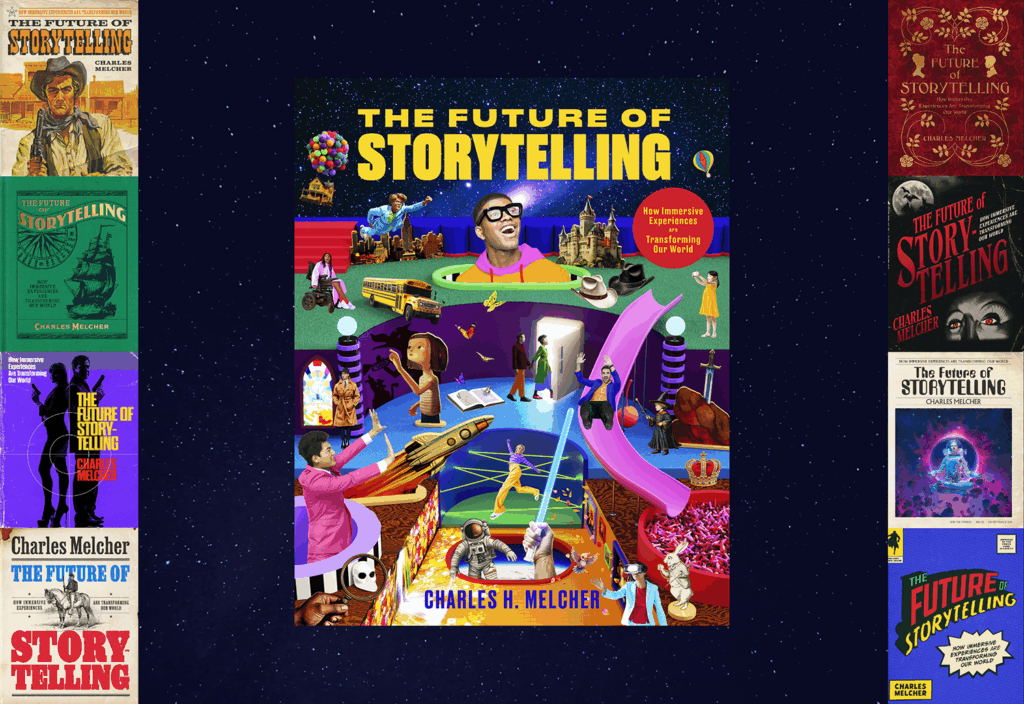While grandparents shower marketers with opportunity, few are returning the favor.
You see them hanging out in all sorts of public places – toy stores, restaurants, movie theaters, card shops, and clothing stores – often holding hands. They take vacations, some of them extravagant getaways to such places as Africa and Alaska. They are endlessly giving gifts, special occasion or not. They’re even hooking up online now.
What sort of special demographic are we discussing here? Why, grandparents and their darling grandchildren, of course. If you didn’t pick up on that right away, don’t worry, because you’re not alone. While some marketers have latched onto doting Ompas and Nonas, many others haven’t yet identified them, despite the tremendous opportunities they present.
Grandparents are out there in great and growing numbers these days, and they live in large part to lavish their grandkids with their largesse. These are not your father’s parents, so to speak. They’re healthier, wealthier, and wiser – living longer, with more disposable income and a higher educational background than past generations.
“Grandparents seem to be very hot, but in the marketplace there’s trouble getting to them,” says Courtney Day, senior vp-marketing at The Senior Network, Stamford, CT, which specializes in advertising, sampling, wall magazines, event marketing, and other services aimed at seniors. “We find that often clients will talk about grandparents, but then have to sort through whether they represent a demographic or a role.” Should marketers target Grandma because of her age, or because she’s got a grandson she wants to spoil rotten?
At last count, New York City-based researcher Roper Starch Worldwide calculated that there are at least 60 million grandparents in the U.S., and that 72 percent of Americans age 50 or older have grandchildren. With roughly 78 million Baby Boomers getting older every day, this “G Force” will swell to 80 million by the end of the decade.
The U.S. Census Bureau estimates that only 15 million of the 60 million American’s 55 and older use the Internet. But according to a 1999 study by Seattle-based Microsoft Corp., they spend almost twice as much time online as their 12- to 17-year-old grandchildren. Among Net newbies, seniors are the fastest-growing age segment.
What’s more, Roper estimates that grandparents spend $30 billion annually on their grandchildren, a number that will rise to $40 billion by 2010. “Twenty-five percent of all toys are purchased by grandparents,” says Day, who also cites the travel, clothing, restaurant, financial services, books, and greeting card industries as ripe for picking out grandparents.
Roper Starch, whose latest pulse on grandparents was taken two years ago, finds that 55 percent said they’d purchased a gift for a grandchild in the past month. That isn’t too surprising, yet the gesture can be frustrating, suggests Kathy Curry, director of client services for the Sandcastle Group, Minneapolis, another agency that targets seniors. “Many times they just send a card with a check inside, because they don’t know what to buy,” Curry says. “It gets even more difficult as the grandchildren get older,” when staying on top of trends in kids’ toys, books, and clothing can be a challenge for someone who doesn’t watch Nickelodeon or MTV.
“That’s especially true if they don’t live close by,” adds Day. “They want to please their grandchildren with a gift from the heart. They want to make a connection. They struggle in choosing the right gift. Marketers that can help make that connection and help clue them in to what kinds of products to buy would be well-received.”
Yet there’s surprisingly little of that direct connection-making going on in the promotional arena. Grandparents are generally lumped in with seniors or other consumers when targeting a particular program. El Segundo, CA-based Mattel, Inc., for instance, has a series of in-store demonstrations for its new Barbie Bake with Me Oven taking place this month and next at F.A.O. Schwarz toy stores in New York City, Chicago, and Orlando. Media alerts won’t single out grandparents, says Mattel spokesman Danny Polumbo, although if Grandma is enticed, remembrances of buying her daughter the Easy-Bake Oven could prompt a sale.
Mattel’s Pleasant Company division gets a bit closer to the target when promoting its American Girl doll line. “Our customer base certainly includes grandparents, and they’re on the mailing list for our catalogs,” says spokeswoman Julie Parks. A recent addition to the collection that could hit home with the older generation is Kit Kittredge, a doll that “grew up” during the Depression, an era that evokes strong emotions in most anyone 65 and older.
VF Playwear, Greensboro, NC, is going for a different type of emotional attachment in marketing its HealthTex children’s clothing, a brand that’s been well-regarded for generations. “About five years ago, we were looking for a way to reach grandparents not just to send them offers, but to use them for word-of-mouth to their daughters and daughters-in-law about the dependability of our products,” explains vp-marketing John Martin. “We looked back down the chain to the moms, whom we realized rely on their moms and mothers-in-law for advice. How do you get these two together?”
Martin found the answer at the point of origin: hospital maternity wards, where the company began giving away gift packs that include a registration card for new mothers and grandparents, tied into a $1,000 savings bond for the just-born grandchild. The tactic has produced a mailing list of 350,000 grandparents, around which a direct-mail program has been developed. Mailings contain a $5 rebate certificate, along with educational literature and an immunization card for tracking the child’s medical moments. HealthTex invites publishers of children’s books, insurance companies, and other related advertisers to piggyback.
The redemption rate on the cash-back coupons is relatively low, Martin reports, but that’s OK. A more important and long-lasting result – if tougher to measure – is grandparents’ recognition of the brand from their own child-rearing days and the recommendations they may make to their daughters. “That’s commentary you can’t go out and buy,” says Martin.
Precious Moments “It’s surprising there’s not more going on,” Martin comments. “You’ve got a population that’s aging and has good money from investments and retirement programs. And when they have a grandchild, he or she becomes their No. 1 priority.”
Greeting card companies have never been shy about leveraging that bond. Hallmark is including grandparents in its newly created line of “Time of Your Life” cards aimed at the aging Baby Boomers. A company backgrounder states that “grandparents are an extremely important consumer group for Hallmark … and will be more so as the Baby Boomers continue to swell the ranks of grandparents. Hallmark finds that the bond between grandparents and their grandchildren is an important and strong one.”
Kansas City, MO-based Hallmark conducts research that follows the evolution of grandparents, and passes that information along to its writers, artists, and product developers. The process has generated loads of birthday cards for grandchildren, new-baby cards and gifts, holiday accessories, books, music albums, and most recently a licensed line of Harry Potter products released this fall.
Hallmark’s 5,000 Gold Crown retailer outlets, most of which are privately owned, are central to the “grand” strategy. “Grandparents, especially grandmothers, shop at Gold Crown stores [and] take advantage of our consumer loyalty program,” says spokeswoman Rachel Bolton. The Hallmark Gold Crown Card program awards points that accumulate with purchases and can be used as cash. In fact, 3.3 million of the cardholders who chose to give their age are in the 55-plus set, “and many of them likely are grandparents,” Bolton suggests.
Cleveland-based American Greetings offers grandchildren cards through mass retailer accounts and its proprietary Carlton Cards shops. For Halloween this year, special activity cards were available. While their products may not be as overtly targeted as Hallmark’s, American Greetings has gift and educational items intended for purchase by parents and grandparents.
“Every day, six million people become grandparents, and we recognize them as an important target audience,” says Kim Hammeren, director of retail promotions. “Future American Greetings direct-marketing programs to grandparents will empower them with information about their grandchildren’s favorite fashions, books, and lifestyle choices.” There’s even been talk internally of creating some sort of grandparents’ club.
Gray Skies Ahead Whereas gift-giving to grandchildren is gaining attention among select marketers, travel companies are still waiting for takeoff. American, Continental, and Southwest airlines say they do nothing beyond offering senior fares. Delta did board a recent direct-mail promotion from Walt Disney World Resorts in Orlando that was sent to grandparents.
Amtrak, Washington, DC, partnered with Disney World and AARP (the official name of the organization formerly known as the American Association of Retired Persons) in May to offer “cross-generational” travel packages to seniors traveling by rail to the AARP biennial convention in Orlando. As a sponsor for the event, Amtrak provided special fares to grandparents traveling with the grandkids, packaged with deals on accommodations and admissions to Disney World.
“Amtrak has been gathering data on seniors,” says Linda Park, director of market segmentation, adding that other grandparent-focused promotions are in the works. “The train is an anchor where grandparents and their grandkids can share memories and learning experiences.” Last summer, Amtrak tied into the film Thomas and the Magic Railroad, which featured actor Peter Fonda as a grandfather. Along with attaching its logo to the film’s one-sheet, Amtrak offered a children’s activity book to seniors purchasing train tickets.
The Internet is quickly becoming another vehicle for reaching grandparents. Take iGrandparents.com, the Conshohocken, PA-based grandparent-specific portal that launched last winter.
“We’re trying to hit the `sweet spot,'” when Baby Boomers first become grandparents – on average at age 47, says ceo Steve Barsh.
At first, iGrandparents.com focused on linking grandparents up with each other through e-mail, chats, advice, and other community services. “But we soon found that was not the best focus,” Barsh admits. So the company redirected content and services to address the relationship between grandparents and grandchildren. “We’re now enhancing that connection through the Web.”
Barsh has enlisted a number of online shopping partners to the site’s e-commerce area including Flooz.com, educational toy retailer ZanyBrainy.com, Gap.com, Barnesandnoble.com, and Americangreetings.com. “As important as e-commerce is, it’s just part of our solution and revenue stream,” says Barsh, who’s more interested in exploring integrated partnerships with the likes of American Express, the site’s preferred credit card, and Choice Hotels, which will be among sponsors of an iGrandparents.com coloring and activity book sent to the grandchildren of new members. Silver Spring, MD-based Choice will also send 100,000 copies of the publication to seniors in its loyalty program.
Last April, Greenfield Online, a Wilton, CT-based research firm, released Surfing Seniors II, its latest online survey of 55-plus Internet users. While their numbers still may not be great, their online behavior is worthy of attention. Of the survey’s 2,800 respondents, 94 percent reported owning a computer. Primary activities online are e-mailing, with 44 percent saying they communicate with grandkids 18 and younger. A point of note for any product marketer is that 90 percent said they enter contests and sweepstakes.
Since fear of privacy invasion remains the major reason why some seniors have resisted going online, Seattle-based seniors portal SAGEport later this year will release a bundled hardware and Internet-access package called SAGEvision. The package will include an Intel Dot.Station Web application with a senior-friendly keyboard and trackball, an ISP service and browser, and a subscription to SAGEport, an information service containing grandparenting-focused content. The company’s initial marketing efforts will run through specialty retailers and kiosks and be directed to the children of seniors, or “Boomers gifting to their parents,” says SAGEport spokesperson Bill Kennedy. “The main influencer is the son or daughter who knows about the technology.”
Those same sons and daughters, of course, are tomorrow’s grandparents. By the time they reach that threshold, perhaps more sage marketers will have the vision to promote their products and services directly to them.



